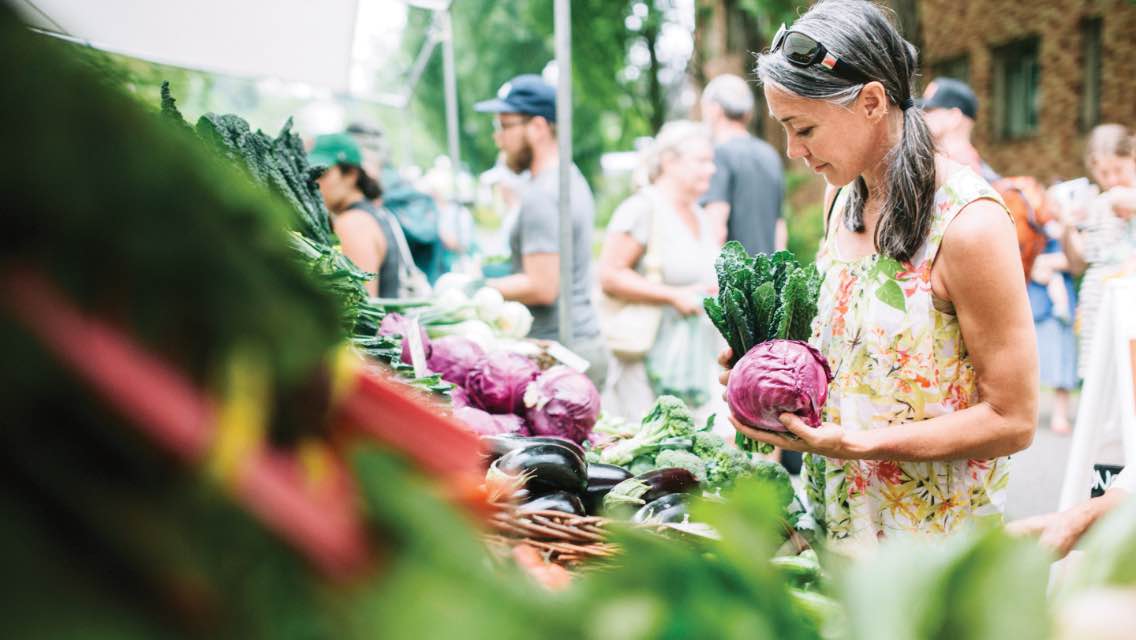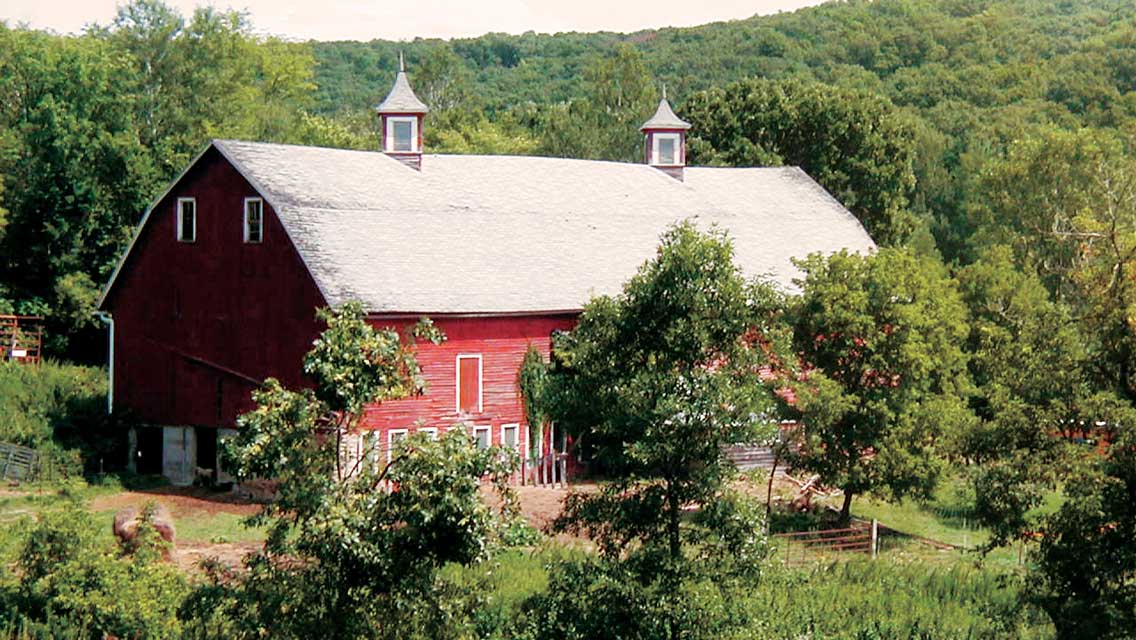Well, sorry to rain on your shopping-cart parade, but it seems that the origin of your food really does matter – to your own health and to the planet’s. These, according to the Natural Resources Defense Council, are just a few concerns you’d be wise to register with regard to most conventionally produced food:
1) Topsoil erosion. One-third of our nation’s topsoil has eroded because of modern industrialized farming practices. Not only does each lost inch cause a 6 percent drop in farm yields, but it also leads to increased flood exposure as a result of siltation.
2) Toxic runoff. Pesticide-heavy runoff from farmland into rivers, lakes and streams takes a toll on wildlife. Riparian habitats within watersheds are destroyed by chemical contamination. Additionally, the conversion of wild habitat to agricultural land significantly reduces fish and wildlife populations through erosion and sedimentation, the effects of pesticides, removal of riparian plants and the diversion of water.
3) Decreased biodiversity. With its emphasis on yield, uniformity, market acceptability and pest resistance, present-day agricultural norm sacrifices a variety of species. Before the advent of modern industrialized agriculture, farmers produced roughly 80,000 species of plants; today farmers rely on about 150. The increasing reliance on a small number of crop species means declining nutritional variety for consumers as well as increased strain on overburdened farmland.
4) Health risks. Heavy reliance on pesticides by conventional farmers is suspected of leading to increased rates of cancer and reproductive problems in humans. More than 80 percent of the most commonly used pesticides today have been classified by National Academy of Sciences researchers as potentially carcinogenic – and are routinely found in mothers’ milk.
Tasteful Inquiry
One of the best alternatives to mass-market shopping is the venerable, old-fashioned farmers’ market. And one of the most satisfying aspects of farmers’ markets is that you get to talk to the vendors and ask questions. One of the first you should ask is whether or not the market is a producers-only farmers market. Producers-only markets will offer more locally grown crops, be more in touch with seasonal foods and will be free of produce shipped in by wholesalers. Sometimes you can tell just buy looking around: If there are tomatoes for sale in the early spring in Minnesota (or bananas pretty much anywhere but Hawaii), chances are you’re at an open-air market rather than a true farmers’ market. You’ll have to do some nosing around to locate the local growers.
Jack Kloppenburg, associate professor in the rural sociology department at the University of Wisconsin Foodshed Project, urges consumers to ask them questions about their farming practices, including the use of pesticides and herbicides, whether the beef is grass- or grain-fed, as well as what kind of handling the food undergoes. “Basically,” he explains, “you’re looking for the shortest, simplest possible route from the field to your mouth.”
You’ll find that with fruits and vegetables, that’s pretty easy. There are farmers’ markets and co-ops in most major cities that carry local, organic produce, and many smaller cities already enjoy a close proximity to area farms.
Finding organic meat and dairy products from your local foodshed can be more of a challenge. In some areas, locally and sustainably grown meat and dairy are all but nonexistent. Since they don’t come through the usual conglomerate channels, these products aren’t generally widely distributed or advertised. Plus, when you do find them, they often cost more per pound than your average, mass-produced variety, in part because raising animals by the dozen in a pasture tends to be less “cost-efficient” than force-feeding them grain, thousands at a time, in a crowded feedlot or industrial dairy operation.
Kloppenburg explains that the cost of meats from smaller farms also tends to be a little higher because “the slaughtering process isn’t as efficient,” he says. On the other hand, he explains, with smaller operations, “you can be more confident that the animal was healthy and treated well.” Smaller beef operations are also more likely to offer pasture-fed beef.
There’s a good deal of evidence that grass-fed meat is leaner and better for your health. Pasture-fed beef offers a far better ratio of healthy omega-3 fats, and is high in conjugated linoleic acid (CLA) – a cancer fighting and fat-metabolizing agent. It also has several times the beta carotene, vitamin E and minerals of grain-fed beef. If you want to find out more about the advantages of pasture-fed beef, www.eatwild.com.
Unless you’re lucky enough to live near a pasture-fed beef farm, or near one of the rare markets that carries the stuff, you will probably have to mail-order it frozen. Shipping adds significantly to the cost, though, and also tends to defeat any “eating close to home” plans you might have. Easier to find than organic beef, pork and lamb, organic, free-range chickens are now available in many traditional supermarkets – but again, locating locally raised organic chickens (and eggs) may still be tricky.
Try to get your hands on raw, organic milk (more on that at www.realmilk.com) and you’ll have a tougher time still. But even if finding super-healthy, foodshed-appropriate food seems a bit complicated and overwhelming at first, don’t despair. As you start learning more about your foodshed, you’ll discover more and better resources. You’ll also start enjoying the hunt, particularly as you meet others who are invested in tracking down truly healthy foods.
Many state departments of agriculture publish lists of sustainable farmers, as well as those who are willing to deal directly with consumers. The Internet is an incredibly rich source of direct-to-consumer resources (see our Resources sidebar in main article). There are also “U-Pick” farms, where consumers can either select their own produce or pick up foods that have only been handled by one or two people.
Community Supported Agriculture is another booming trend. Through CSAs, as they are called, you can buy a share in a farmer’s crop for the coming year. “If it’s not such a good year, you may not benefit as much,” says Tom Taylor. “But if it is a good year, it’s unbelievable what you get. And it helps close that link between farm and fork.” It also helps small farms stay afloat and get a fairer price for their produce.
Many CSAs even give you the opportunity to work the farm one or two days a year, thus further allowing you to integrate yourself with your foodshed. If you ask around, you might also find a dairy operation that will let you buy a “share” of a dairy cow and then help yourself to fresh, raw milk, cream and butter (don’t worry, the cow is milked for you – see below).
Milk Shakeup
Some of the best food resources are small farms that may not be “certified” organic. In fact, often they’re not “certified” anything, and sometimes they’re even in hot water with officials.
Many small farmers have pulled away from anything having to do with government programs, having discovered that the bureaucratic hassles of organic certification and USDA approval were way more trouble than they are worth, that they tended to favor agribusinesses and in some cases actually hinder healthy, sustainable farming and production methods.
Midvalleyvu Farm, a small, family-owned, Grade-A dairy operation located in Pepin County, Wis., owned and operated by Wayne and Joyce Brunner and their kids, has been embroiled in a state legal battle for more than a year now – all as a result of their offering raw milk (unavailable in stores) directly to consumers who seek it out in the interest of their health. You can read their whole story (and find out more about the raw-milk debate, which in many ways typifies the small-farmer vs. agribusiness conflict) at www.midvalleyvu.homestead.com.
True Food
If all this gets you riled, you might also want to check out www.truefoodnow.org. This unabashedly biased Web site from the Greenpeace True Food Network offers consumers ample information about the use of genetically and bio-technologically engineered (GE) food ingredients, and also encourages citizens to get involved in opposing the use of untested GE ingredients in our food supply.
Politics aside, they also offer a very handy (and shocking) “True Food” shopping list – the first-ever consumer guide to avoiding genetically engineered food – plus advice on “looking behind the label” of your favorite foods and food brands. Good luck finding a major-brand-name breakfast cereal that doesn’t contain GMOs, but at least you’ll find plenty of good alternatives and lots of helpful information. You can also sign up to receive free e-newsletters and alerts, send an e-postcard to friends letting them know you’re making the move to True Food, and download a hip, comic-book-like True Food screensaver for your Mac or PC. Shoppers unite!




This Post Has 0 Comments